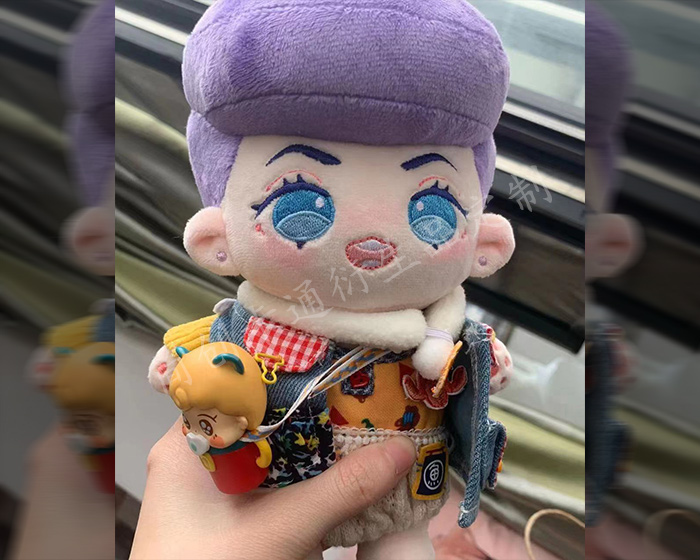stuffed animals often serve as beloved companions, providing comfort and joy, especially for children. However, they can also attract unwanted pests like dust mites, moths, and even bedbugs if not properly cared for. Keeping bugs out of stuffed animals requires a combination of good hygiene practices, proper storage, and preventative measures. Here’s a comprehensive guide to ensure your plush toys remain bug-free.
1. Regular Cleaning
Regular cleaning is essential to keep bugs at bay. Dust and dirt can attract pests, so it’s important to maintain cleanliness:
-
Washing: Check the care labels on your stuffed animals. Many can be machine washed, while others may require hand washing. Use a mild detergent to clean them regularly, ideally every few months.
-
Spot Cleaning: For minor stains, use a damp cloth and mild soap. This prevents the buildup of dirt and keeps the fabric fresh.
-
Drying: After washing, make sure to dry stuffed animals completely. Dampness can attract mold and bugs. If machine drying is allowed, use a low heat setting, or air dry them in a well-ventilated area.
2. Proper Storage
How you store your stuffed animals plays a significant role in keeping bugs away:
-
Use Airtight Containers: When storing stuffed animals for long periods, use airtight bins or vacuum-sealed bags. This prevents pests from accessing them and protects against moisture.
-
Avoid Basements and Attics: These areas can be damp and prone to infestations. Instead, store stuffed animals in a clean, dry area of your home.
-
Elevate Storage: Keeping bins off the ground can deter insects that might crawl up. Use shelves or cabinets to store your plush toys.
3. Bug Deterrents
Consider using natural bug deterrents to help keep pests away:
-
Dried Lavender or Cedar Chips: Both of these natural materials are known for their insect-repelling properties. Placing sachets of dried lavender or cedar chips in storage containers can deter moths and other pests while imparting a pleasant scent.
-
Essential Oils: A few drops of essential oils, like peppermint or tea tree oil, can be added to cotton balls and placed in storage areas. These oils are known to repel various insects.
4. Monitor Humidity Levels
High humidity can encourage bug infestations and mold growth. Keeping your home’s humidity levels in check is crucial:
-
Use a Dehumidifier: In particularly humid climates, a dehumidifier can help maintain optimal indoor humidity levels, making it less conducive for pests.
-
Air Circulation: Ensure proper ventilation in storage areas to prevent dampness. Opening windows or using fans can help circulate air and keep environments dry.
5. Regular Inspections
Routine checks can help identify and prevent infestations before they become severe:
-
Visual Inspections: Periodically inspect stuffed animals for signs of pests, such as tiny holes, webs, or shedding. If you notice any signs, take action immediately to address the issue.
-
Check Surroundings: Regularly clean the areas where stuffed animals are kept. Dust and vacuum to remove any potential nesting materials that pests might find appealing.
6. Educate on Hygiene Habits
For children, instilling good hygiene habits can go a long way in preventing bug infestations:
-
Wash Hands: Encourage children to wash their hands before and after playing with stuffed animals. This can help minimize the transfer of dirt and allergens.
-
Limit Food Around Stuffed Animals: Teach kids to avoid eating near their plush companions to prevent crumbs and spills that could attract pests.
Conclusion
Keeping bugs out of stuffed animals involves a proactive approach that combines regular cleaning, proper storage, and the use of natural deterrents. By maintaining cleanliness and monitoring the environment, you can ensure that your cherished plush companions remain bug-free and continue to bring comfort and joy for years to come. With a little effort, you can protect these beloved toys and preserve the fond memories they hold.
The following are some examples of plush toys that our factory customizes for customers. Check out if there is one that you like best.
-
Custom Animal Plush
-
Cute Plush Doll
-
Custom Stuffed Animals
-
Plush Toy
-
Plush Dolls
-
Custom Stuffed Dolls
-
Custom Plush Toy
-
Cotton Dolls
-
Weighted Plush Toys
-
Cute Stuffed Animals
-
Custom Pet Stuffed Animal
-
Warmies Stuffed Animals
-
Weighted Stuffed Animal
-
Soft Toys
-
Plush Stuffed Doll
-
Custom Stuffed Dolls
-
Plush Maker
-
Bear Stuffed Toy
-
Anime Plush
-
Custom Stuffed Animal
-
Anime Plush
-
Custom Plush Toy
-
Personalised Stuffed Animal
-
Plush Animal Toys
-
Custom Plush Makers
-
Custom Plushies
-
Toy Manufacturer
-
Rag Doll Making
-
Custom Toys
-
Dog Plush Toys
-
Custom Rag Doll
-
Stuffed Animals
-
Custom Plush
-
Custom Plush Dolls
-
20cm Cotton Doll
-
Jojo Plush
-
Custom Doll
-
Jojo Doll
-
Large Plush Toys
-
15cm Cotton Doll
-
Dumpling Plush
-
Cotton Doll


























